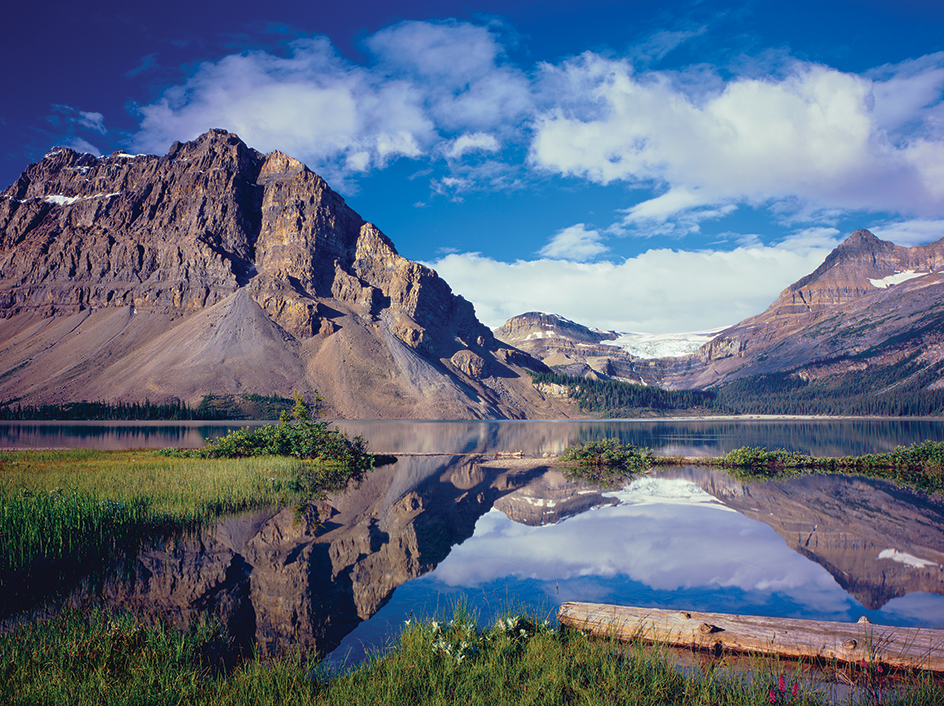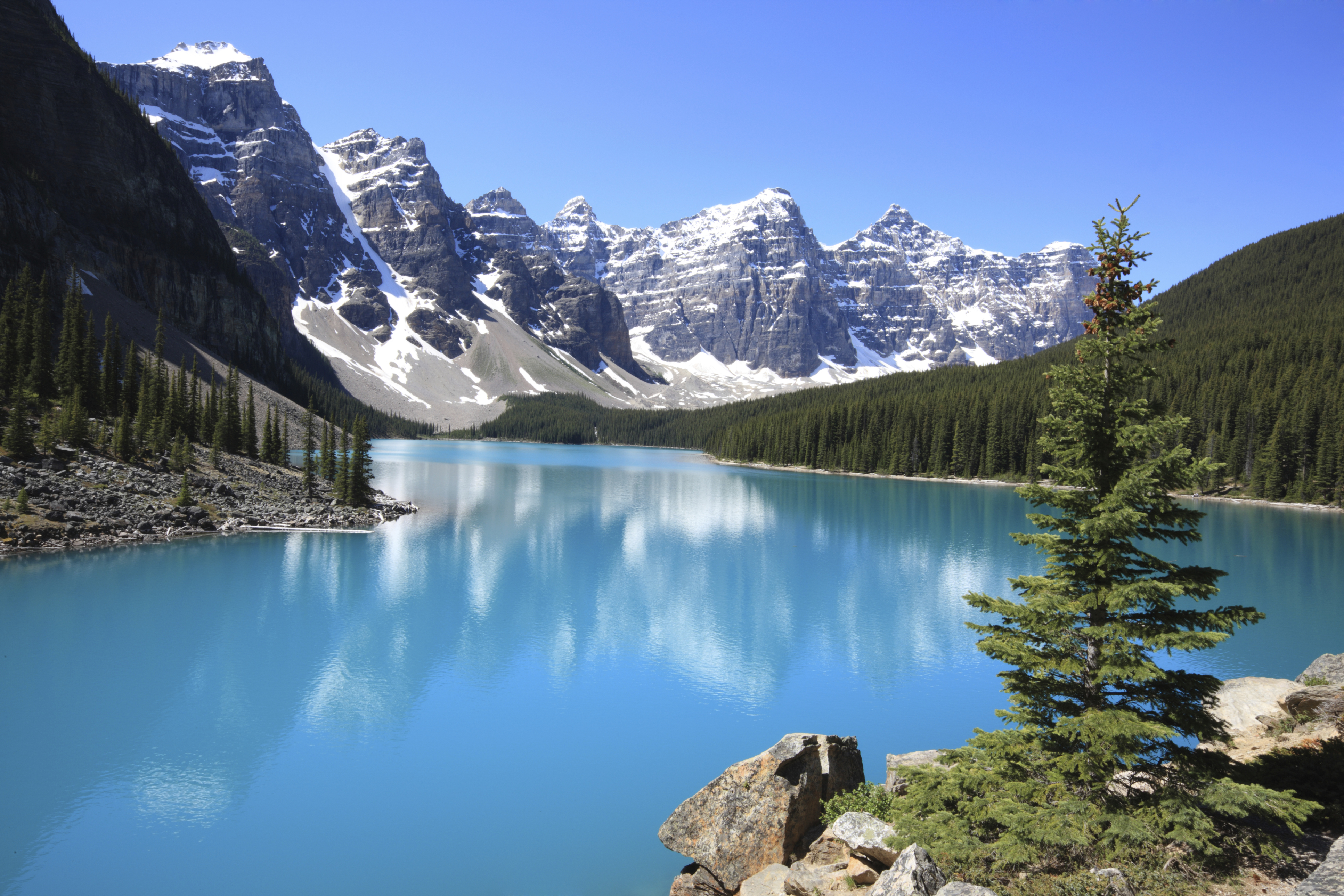Banff, << bamf, >> National Park, established in 1885 as Banff Hot Springs Reservation, is the oldest national park in Canada. The park’s spectacular scenery has made it one of Canada’s most popular tourist attractions. The park has many deep valleys, glaciers, lakes, and snow-capped mountains. It lies on the eastern side of the Rocky Mountains in southwestern Alberta.

Many features of Banff National Park have been shaped by glaciers during the past million years. Hundreds of glaciers still exist in the mountains. Streams formed by the meltwaters from some of these glaciers feed such lakes as Bow Lake, Lake Louise, Moraine Lake, and Peyto Lake. Banff’s deep valleys have dense forests, chiefly of lodgepole pine trees. Subalpine fir, Engelmann spruce, and Lyall’s larch grow at higher elevations. The Castleguard Caves, in the park’s northwest, make up the longest cave system in Canada. Animals in the park include bighorn sheep, black and grizzly bears, deer, elk, moose, mountain goats, and a small herd of bison.

Visitors can enjoy many outdoor activities. Over 1,000 miles (1,600 kilometers) of trails provide hiking routes. In winter, cross-country skiers use many of the trails. The park also has three downhill skiing areas. Summer visitors may enjoy canoeing and other water sports on the lakes and streams. Near the town of Banff in the southern part of the park is a public pool fed by hot mineral springs. The park’s 14 campgrounds have more than 2,000 campsites. Visitors may also take bus tours of the park and visit national historic sites within the park.
In 1883, railway workers discovered hot mineral springs in an area near what is now the town of Banff. Several people tried to buy the land and use the springs for private gain. But in 1885, the Canadian government declared 6,400 acres (2,600 hectares) around the springs to be a public land reserve. This action, in effect, established the land as a national park. In 1887, the government expanded the reserve to 156 square miles (405 square kilometers) and officially declared it a national park. The park’s name was changed to Banff National Park in 1930. Today, the park covers 1,641,000 acres (664,100 hectares).
See also Banff; Lake Louise.
